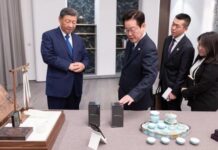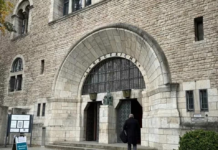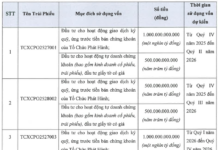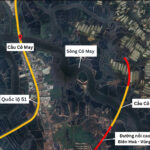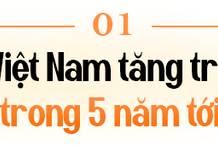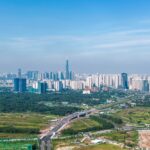
Bà Rịa, a vibrant city in the Bà Rịa-Vũng Tàu province, has a rich history and plays a crucial role in the region’s development.
Strategically located 90km southeast of Ho Chi Minh City and 20km northeast of Vũng Tàu, Bà Rịa enjoys strong connections with surrounding districts and is easily accessible.
During the Vietnam War, Bà Rịa held administrative significance as the district-level town of Phước Lễ, serving as the district seat of Châu Thành in Phước Tuy province and the provincial capital of Phước Tuy.
On December 8, 1982, Bà Rịa was established as a town, previously known as Phước Lễ commune, Châu Thành district, Đồng Nai province. At that time, Bà Rịa town bordered Long Điền commune to the east, Long Hưng to the west, Hòa Long to the north, and Tim Sông and Cầu Cỏ May to the south, all within the special zone of Vũng Tàu-Côn Đảo.

Bà Rịa, formerly a small town, has now become the provincial capital of Bà Rịa-Vũng Tàu.
The establishment of Bà Rịa town on June 2, 1994, marked a significant change as Châu Thành district was divided into Châu Đức and Tân Thành districts, with Bà Rịa becoming a separate town. This shift led to the relocation of important provincial institutions from Vũng Tàu to Bà Rịa, reflecting its growing importance.
A pivotal moment came on August 22, 2012, when the government decided to establish Bà Rịa city under the administration of the Bà Rịa-Vũng Tàu province. This decision was based on the city’s existing natural area, population, and administrative subdivisions.
The origin of the name “Bà Rịa” is steeped in history, and according to the Bà Rịa-Vũng Tàu newspaper, it pays tribute to a remarkable woman who made significant contributions to the region. This woman, known as Bà Rịa, played a pivotal role in the development of Long Điền and Xuyên Mộc during the reign of Lord Nguyễn Phúc Tần. Her tomb and shrine are located in Tam Phước commune, Long Điền district, attracting visitors eager to learn about the region’s history.
As mentioned in the Bà Rịa-Vũng Tàu newspaper article, Bà Rịa played a crucial role in rallying the people to repair bridges, roads, and canals damaged by storms and floods, facilitating the mission of Lễ Thành Hầu – Nguyễn Hữu Cảnh in the southern land expansion. Although her surname is unknown, Bà Rịa’s remarkable achievements in land reclamation and her virtuous character earned her widespread respect. In recognition of her contributions, Lord Nguyễn Phúc Chu (1691-1752) bestowed upon her the title of Hàm Nghè, allowing her to bear the Lord’s family name, and thus, she became known as Nguyễn Thị Rịa.
By 2025: Bà Rịa Aims to Meet Criteria for First-Class Urban Area
On the occasion of the 30th anniversary of its establishment, the Secretary of the Provincial Party Committee of Bà Rịa-Vũng Tàu, Phạm Viết Thanh, emphasized the need for Bà Rịa city to accelerate the completion of its transportation infrastructure. This includes focusing on key projects that serve as vital links to national highways, provincial roads, and neighboring districts, towns, and cities within the province and the Key Economic Region of the South. Additionally, the city should seize opportunities arising from improved transportation connectivity to propose projects and initiatives that will drive local economic development and enhance the quality of life for its residents.

Bà Rịa serves as the administrative center of the Bà Rịa-Vũng Tàu province.
Trần Thanh Dũng, Chairman of the People’s Committee of Bà Rịa city, shared the city’s ambitious goal of meeting the fundamental criteria for a first-class urban area by 2025. To achieve this, the city will focus on mobilizing resources for the development of trade and services, with a particular emphasis on promoting high-value-added industries and small-scale handicrafts. Additionally, the city aims to advance agriculture through the application of advanced technology, aligning with the program for building new rural areas.
In 2024, Bà Rịa city successfully accomplished and exceeded 32 out of 32 targets and tasks. The estimated revenue collection by the end of the year is expected to reach VND 1,921 billion, surpassing the target by 111.64%. The mobilization of investment capital in society reached VND 1,336 billion, achieving 111.39% of the plan, and is projected to reach VND 1,400 billion by the end of the year. Notably, the city has eradicated poverty, with no households falling below the national poverty line.
Tạ Quốc Trung, Director of the Department of Construction, shared insights into the province’s urban planning for the 2021-2030 period, with a vision towards 2050. According to the plan, Bà Rịa-Vũng Tàu is well-positioned to meet the criteria for a centrally governed city, playing a pivotal role in the urban system of the Southeast region. The area designated for the establishment of a first-class city under the central government includes the urban development areas of Vũng Tàu, Bà Rịa, Phú Mỹ, Long Điền, and Long Hải.
In parallel, the province will focus on developing and modernizing satellite cities, which will act as catalysts for growth, driving the development of outlying areas, coastal regions, and rural areas. This includes eight fifth-class urban areas: Ngãi Giao and Kim Long (Châu Đức district); Hòa Bình, Phước Bửu, Bình Châu, and Hồ Tràm (Xuyên Mộc district); Đất Đỏ and Phước Hải (Đất Đỏ district); and one ecological marine urban area (Côn Đảo district).
The Bridge to Billions: Unveiling the 1.2-Trillion-VND Connector in Ba Ria – Vung Tau
The Cau Co May 3 Bridge is a vital component of the Bien Hoa – Vung Tau expressway. Upon its completion, it will serve as a crucial link, connecting Vung Tau with key economic zones such as the Phu My Industrial Park and the Cai Mep – Thi Vai port system.

